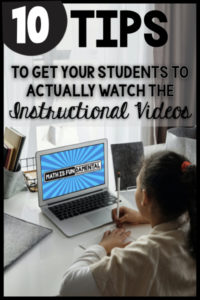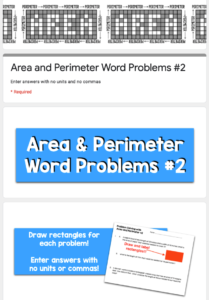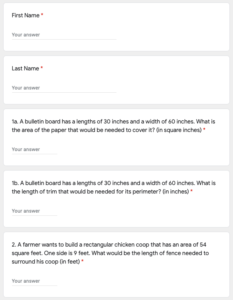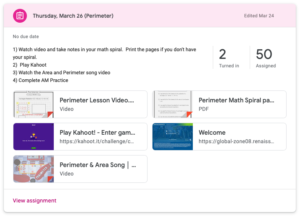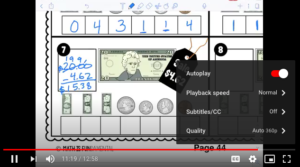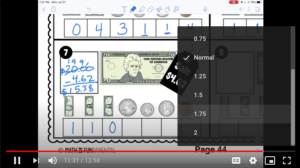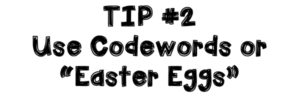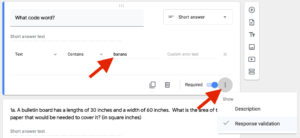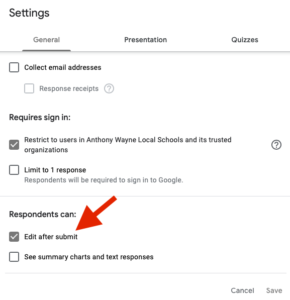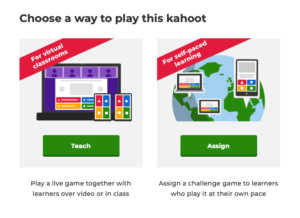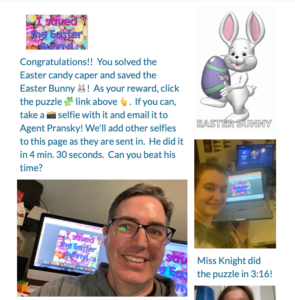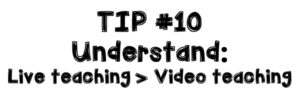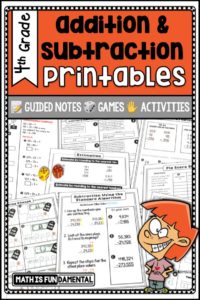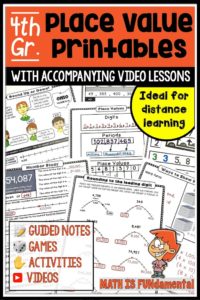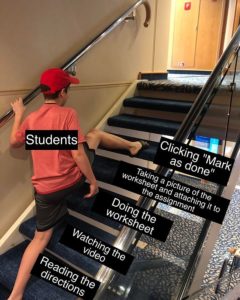
One of the most frustrating problems I experienced with distance learning was that some students were trying to simply do the assignment before doing any of the activities leading up to it. Predictably, this led to them often failing the assessment.
For me, a typical distance learning lesson began with a short video explaining the day’s math topic. I would share this in Google Classroom along with other activities to complete. If you made any videos like these, then you know that they can be incredibly time-consuming to make, especially if your are a perfectionist like me and you make a flub up somewhere and have to redo it. Making them short is also very challenging unless you speak really fast, and if you do that then, you probably make more mistakes. Sigh. I get it.
While students watched the lesson video, they were supposed to take notes in their Math spirals. Our math spirals were a real life-saver because it had handy spaces for each topic for students to take notes.
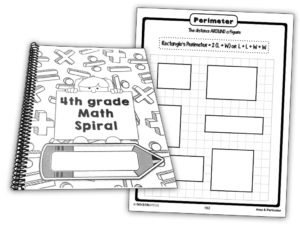 |
| Look for this👆 in my TpT store soon. |
or maybe task cards that I had made digital and put in Google forms.
Of course, everything would always be nicely bundled and explained in their Google Classroom.
So after doing all this, this kids should all ace their assignments, right? Uh. Well, no.
Based on data from my Kahoot, Quizizz, Boom Cards, Google Form, or whatever, I could tell that some students just didn’t understand the skill. After a little google meet time with these students, I discovered to my disappointment that most of these students just had never watched the lesson video… at all. They hadn’t taken any notes in their math spiral… at all. I’ll be honest, with all the work I had put in to prepare and organize these assignments, I was pretty mad at them.
But, rather than simply get mad at or punish at these students somehow, I decided to make some changes myself, and I think that, all in all, these changes made a big impact. Here are my 10 tips for getting the most out of your distance learning videos.
Like Mary Poppins suggested, sometimes its important follow something not so pleasant with something to look forward to. In my daily lessons, we would always do something fun (and social) at the end of the day’s lesson. My student’s most favorite activity was to play Kahoot. We did them live, and we also did them as an independent, self-paced “Challenge”, a great new feature Kahoot added last year.
Keep students as physically involved and interacting with as you can. I have students taking guided notes right along with me just like they would do at school. That is much better than having them simply watch me do math problems.
You can also try to incorporate a physical task in the middle of a long video. For example, you might ask the students to do jumping jacks while they skip count by 8’s to 96 or something like that just to keep them active.
If you have students who are still not working to expectations, then what I did was I had a daily one-on-one google chat with me. During this time I would review that day’s expectations and check their work in their math spiral to be sure that they had watched the video. If needed I would work through the assignment with the student as well. Usually after a week or so of these meetings, I could tell the students that they are expected to continue to do these thing on their own without me checking in.
The way that you record your video can make a big difference in how easy it is for your students to follow. Now I know as a teacher you aren’t expected to be Ken Burns or anything, and your time is limted, but there are some simple things for you to consider that can make an improvement in the quality of your videos.
SOUND. You can record with even an inexpensive usb microphone and make a dramatic improvement in the sound quality of your video. Do you have trouble with background noise? (your kids yelling, running water in the sink, etc…) Try using Airpods if you have them to record. I have found they do a good job blocking out other noises. You can also try “accidentally” locking your kids in the basement. Just kidding. 😉
VIDEO: I love the recording feature in Apple Keynote (Powerpoint has this, too I believe). You can make really neat transitions and really plan out what you want to say and present. There are also options to add great images or even put videos inside your video. (That gets a little Inception, doesn’t it)
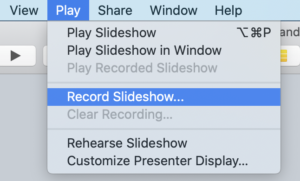
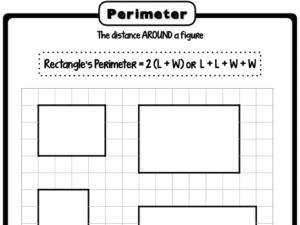
Screencastify is also super easy to make videos and exports directly to drive. Super convenient.
My latest hack is to use this super combo: Ipad + Apple Pencil + Notability app. Check out the video below to learn more about this.
With all of these tips in mind, understand that even the best, most well-polished video lesson can cannot hold a candle to a live teacher. A live teacher can speed up or slow down in response to the students. A live teacher can be asked questions and clarify answers. A live teacher can bring students back in to focus or recognize when they need a movement break. A live teacher is not affected by poor internet connectivity, noisy siblings, and cranky parents. A live teacher doesn’t need to compete with all of the temptations at home – snacks, video games, Tik Tok.
On the other hand, a video has the option of being used anywhere at any time. This is handy for when students are completing homework or if parents/tutors need a reference to help a child. So video has its place, as long as we remember it is in the back seat.
Thanks for reading. If you are interested in the math spiral pages or videos lesson mentioned in this post, to go with them shown here, please check out these products in my TpT store:



